Orchid is a capricious plant that needs to be created for the normal growth to take place and requires appropriate care. If these conditions are violated, aerial roots grow from the pot. They become like a normal sign or signal a violation of the rules of cultivation.
Content
Features of the structure of the roots
Orchid roots perform two main functions:
- provide fixation of the plant on the substrate;
- equip it with the necessary nutrients necessary for full growth.
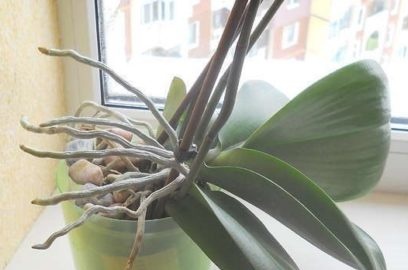 Plants growing on trees form air roots. They are dense processes of either flat or cylindrical shape. Their upper surface is covered with a protective shell, which in structure resembles a soft sponge. In addition, moisture from the air accumulates on it and provides the plant with the necessary nutrition and oxygenation.
Plants growing on trees form air roots. They are dense processes of either flat or cylindrical shape. Their upper surface is covered with a protective shell, which in structure resembles a soft sponge. In addition, moisture from the air accumulates on it and provides the plant with the necessary nutrition and oxygenation.
Orchids growing in pots or in the garden have underground roots. They are located in the ground and for good growth they need a lot of space. The upper part of the root system is above the soil, they absorb water and oxygen from the air. Like aerial roots, they are a strong and solid structure.
Pruning features
If the orchid roots grow up, then this can alert the gardener. Their appearance above ground level may seem like a sign of a serious illness or a lack of space in the pot. This is not necessary if the root system is healthy, has a gray tint, which after watering changes to green. Before pruning the roots of an orchid, you should determine whether they are alive or dead.
Living
A live root that has come out cannot be cut off under any circumstances. Such a procedure will cause pain in the plant, which will cause wilting or the development of a serious disease. You can distinguish it from a dead person by making a simple test - placing the orchid in a container of water. The living root will immediately turn green, and its structure will become firm and smooth.
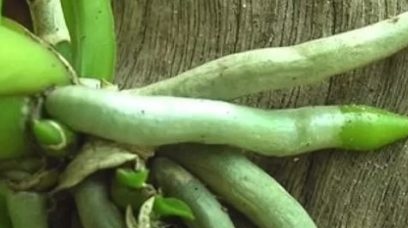
The dead
Dead aerial roots of orchids must be cut. Because of them, the plant will not have enough nutrition, and it will begin to fade. In addition, they interfere with the formation of a new root system, due to which a reliable fixation of the plant and the plant grows well. You can distinguish them from living by doing the same test. Dead roots will not change color and structure after interacting with water; phalaenopsis should be cut off immediately.
If they got out of the pot
If the roots of an orchid came out of the pot, this should not be alarming, since such an effect is normal for this type of plant. Nature created such a root system for better saturation with moisture and air. Trimming requires only dead roots. Living cannot be removed, no matter how much space they occupy in the pot.
The reason for the appearance of aerial roots
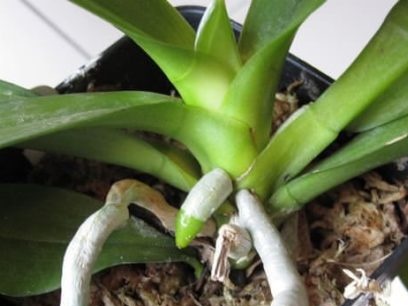 The roots do not grow up far from all orchids. This inevitably occurs only in certain species of varieties. The reasons may also be if the plant was in adverse conditions, which led to drymold, stiffness, or discoloration.
The roots do not grow up far from all orchids. This inevitably occurs only in certain species of varieties. The reasons may also be if the plant was in adverse conditions, which led to drymold, stiffness, or discoloration.
Drying
A common reason why roots come out of the pot is their drying out. Florists believe that this is a natural process for self-preservation. Orchids are easier to obtain nutrients if the roots are above ground level. To prevent this phenomenon is simple - you need to regularly water the flower.
The appearance of an aerial root is not the only consequence of drying out. Because of this, it will become easier to injure the plant during transportation, there is a high probability that it will burn due to an overdose of fertilizer or a fungus will develop. If the plant is not provided with watering or spraying in time, then it will quickly die.
Mold
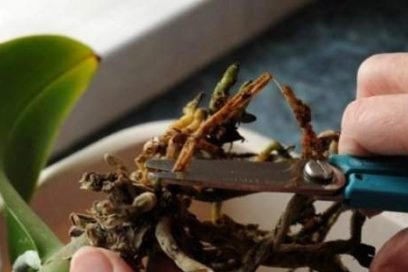 Orchid is a very moody plant. Aerial roots can also appear from an excess of moisture. In this case, they may appear signs of mold and fungus. They begin to bulge out of the soil with a lack of light or low air temperature. To prevent this, it is necessary to water the flower only after the earth begins to dry out. The optimum temperature for the content of orchids is 20-25 degrees Celsius.
Orchid is a very moody plant. Aerial roots can also appear from an excess of moisture. In this case, they may appear signs of mold and fungus. They begin to bulge out of the soil with a lack of light or low air temperature. To prevent this, it is necessary to water the flower only after the earth begins to dry out. The optimum temperature for the content of orchids is 20-25 degrees Celsius.
Numbness
If the orchid has a lot of aerial roots and at the same time they have a dense woody structure - this is a sign of plant aging. It can be attributed to the natural age-related inevitable process. To prevent this, it is necessary to carefully trim the dead roots, leaving only the living.
Color change
Together with the protruding roots of the orchid, they can also change the color cast. A sharp reddening indicates that the roots are in a state of growth, in which case you do not need to do anything with them, they will soon regain their normal color.If large roots of a black rusty hue stick out, this indicates an increased accumulation of salts. They climb out of the soil, because inside it does not receive enough nutrition. At low temperatures and dry air, the situation may worsen. Therefore, in order to save the plant, it is required to provide plenty of ventilation in the room and put the pot away from heating appliances.
What to do
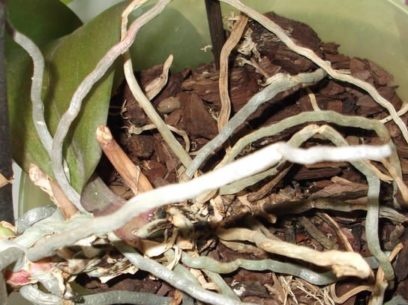 The first thing to do with the aerial roots of an orchid is to monitor the further behavior of the plant. During this period, it is necessary to adjust watering, to provide the flower with an optimal level of light and humidification in the room. If the air roots began to fill up a lot of space, then they should be transplanted into a new pot, for this it is necessary:
The first thing to do with the aerial roots of an orchid is to monitor the further behavior of the plant. During this period, it is necessary to adjust watering, to provide the flower with an optimal level of light and humidification in the room. If the air roots began to fill up a lot of space, then they should be transplanted into a new pot, for this it is necessary:
- Wait until the flowering ends.
- Remove the entire plant from the pot and dip it in water so that the substrate and soil are softened.
- Carefully remove the orchid from the ground, slightly brushing off the root.
- Remove dead and dried roots.
- Plant a plant in a new pot so that the entire root system is in the soil.
After the transplant, it is recommended to put the plant in the shade so that it does not receive direct rays of the sun. After that it is recommended to water the soil, but first in a new pot you need to create holes in the pot to ensure complete waste of excess fluid.
Root pruning
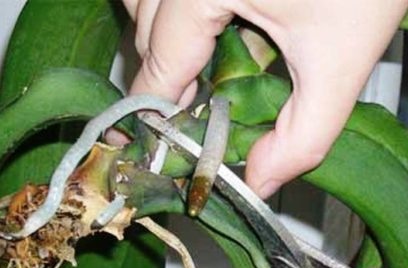 If the roots of the orchid come out of the pot, then they can be carefully removed. Cutting them is recommended in order to improve health and improve flower growth.It is necessary to eliminate dead and rotten processes. If this is not done, then the process of destruction of organic compounds will begin, which will negatively affect the growth of plant crops. Trimming roots consists of several stages: preparation of tools, search for elements, their removal and processing after completion of the procedure.
If the roots of the orchid come out of the pot, then they can be carefully removed. Cutting them is recommended in order to improve health and improve flower growth.It is necessary to eliminate dead and rotten processes. If this is not done, then the process of destruction of organic compounds will begin, which will negatively affect the growth of plant crops. Trimming roots consists of several stages: preparation of tools, search for elements, their removal and processing after completion of the procedure.
Tool preparation
In order to remove roots from a plant, a special garden pruner or sharp knife is needed. Previously, the tool must be disinfected or treated with an alcohol solution, if this is not done, that is, there is a risk of infection in the plant.
Search for items to shorten
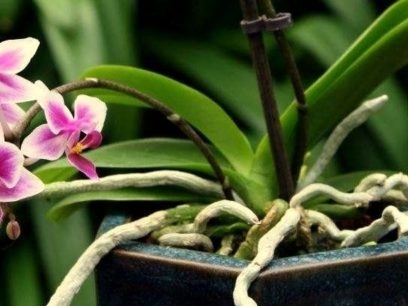 Before processing the root system, you need to shake the ground from it and carefully examine it. Previously, you can moisten the roots so that it is easier to separate the dead from the living. It is necessary to remove those shoots that no longer grow, have a gray tint after interacting with water, and there are signs of rot or mold on them.
Before processing the root system, you need to shake the ground from it and carefully examine it. Previously, you can moisten the roots so that it is easier to separate the dead from the living. It is necessary to remove those shoots that no longer grow, have a gray tint after interacting with water, and there are signs of rot or mold on them.
The process itself
To carry out pruning, do the following:
- Abundantly water the soil, which is in a pot with an orchid.
- After a few seconds, remove the plant from the substrate.
- Separate rotten and dry processes.
- Trim problem areas with pre-sanitized pruning shears or scissors.
- To process the cut-off places with a weak solution of potassium permanganate or fungicide.
- Those places of the slices that were below put in a vitamin solution. To prepare it, you need to mix 1 ampoule of vitamin B, B1 and B12. Place the shoots in it and leave for 10-15 minutes.
After the treatment, it is necessary to plant the plant in the same or a new pot. After planting, it should be covered with a substrate to improve fixation. If the processing is carried out correctly, then in 2-3 months many new roots will appear.
How and how to properly process the flower after the procedure
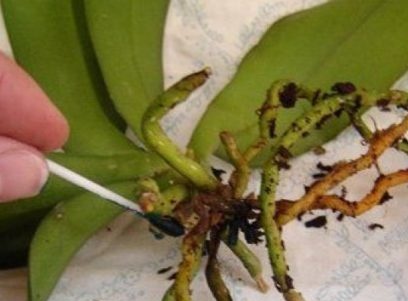 Be sure to process the roots of the orchid after pruning. Through open sections, an infection or bacteria from the soil can invade the plant, causing it to wither away or die. To avoid this after cutting off the processes, it is necessary to make the treatment a weak solution of potassium permanganate or fungicide. Experienced flower growers recommend using one of several means for this purpose:
Be sure to process the roots of the orchid after pruning. Through open sections, an infection or bacteria from the soil can invade the plant, causing it to wither away or die. To avoid this after cutting off the processes, it is necessary to make the treatment a weak solution of potassium permanganate or fungicide. Experienced flower growers recommend using one of several means for this purpose:
- charcoal or activated carbon, previously crushed;
- frayed sphagnum moss;
- brilliant green;
- ground cinnamon.
One of the means must be carefully applied to the damaged area so that it completely covers the joints. The main purpose of their use is to prevent infection from entering the plant culture. In addition, they prevent the risk of decay, and accelerate the healing process of wounds.
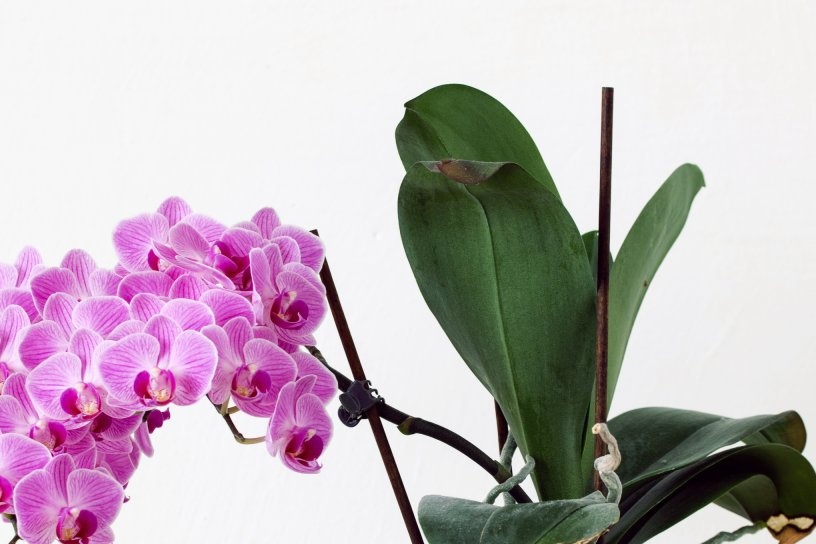 You may be interested in:
You may be interested in:Choosing the Right Filler
There is another reason why the roots climb outside, it is associated with the use of the wrong filler. For growing orchids, only a special substrate is suitable, which can be purchased ready-made in a store for gardeners. You can create it yourself from the earth, moss and bark.
When growing flowers in ordinary soil, adverse conditions will be created for them, because of which it will become impossible to develop a dense and root system, therefore, air processes can begin to appear a few months after planting.
Aftercare
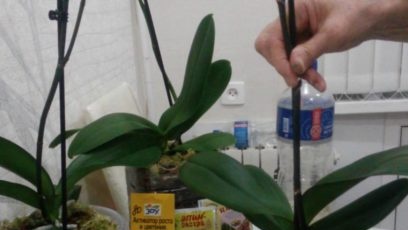 After replanting or pruning the plant for 2-3 days, you do not need to water it, since excessive moisture will cause the development of fungus or mold. A flower pot needs to be put on a window where there is a lot of light, but at the same time, you need to create a small curtain that will refract the direct rays of the sun.
After replanting or pruning the plant for 2-3 days, you do not need to water it, since excessive moisture will cause the development of fungus or mold. A flower pot needs to be put on a window where there is a lot of light, but at the same time, you need to create a small curtain that will refract the direct rays of the sun.
Then you need to carry out regular watering - 3 times a week. In summer, in extreme heat, it is necessary to equip the plant with liquid every day. Periodically, it is necessary to introduce mineral fertilizers into the soil necessary for the full growth of the flower.
Conclusion
Do not worry about what to do if the orchid has got out roots from the pot. This may be a normal sign for a healthy plant, you need to monitor its condition in the future. But if the roots and the flower itself have acquired an unnatural diseased appearance, then you need to trim the old roots or transplant a plant into another pot.

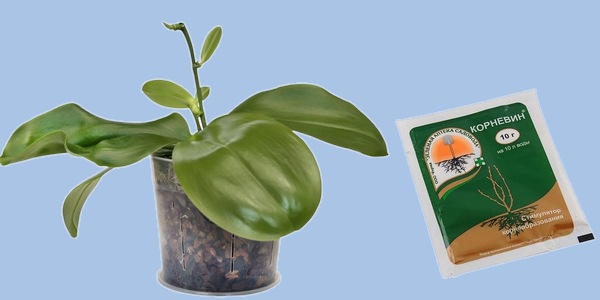
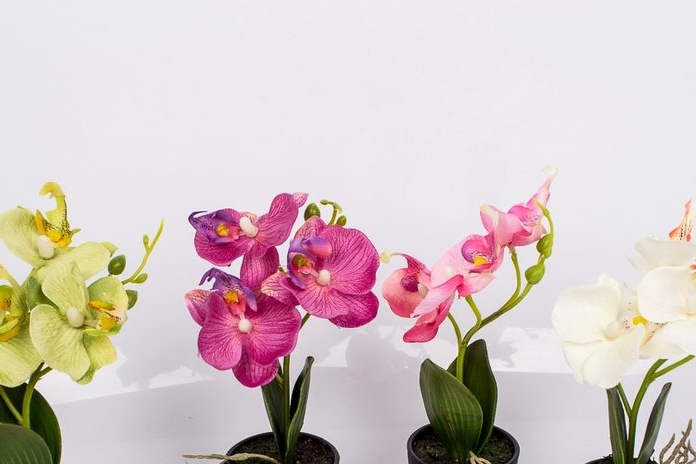
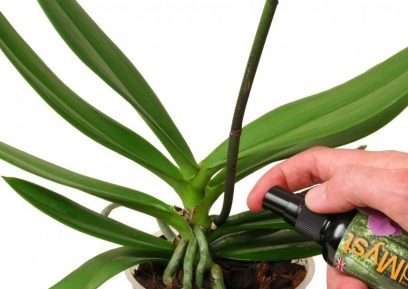
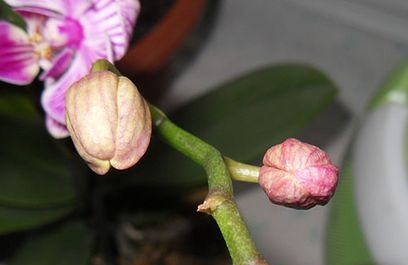 Reasons why orchids fall flowers and what to do
Reasons why orchids fall flowers and what to do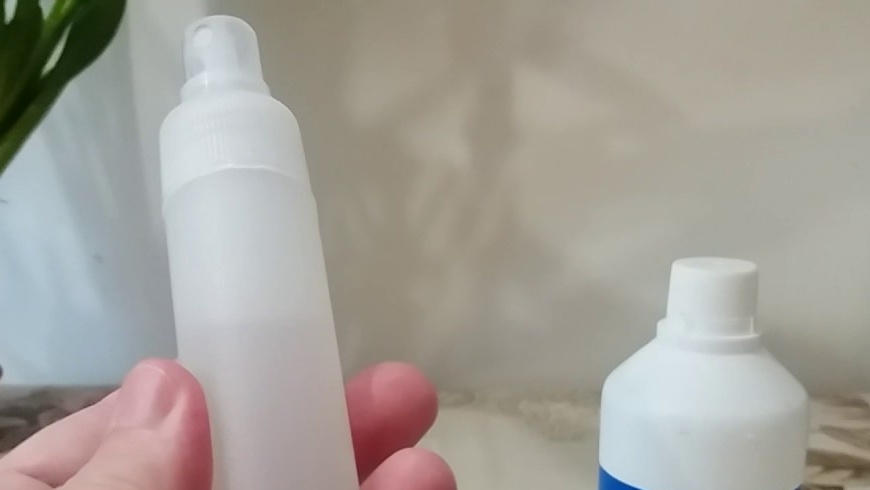 How to use hydrogen peroxide for orchids and why
How to use hydrogen peroxide for orchids and why Midges are wound up in the orchid: effective ways to get rid
Midges are wound up in the orchid: effective ways to get rid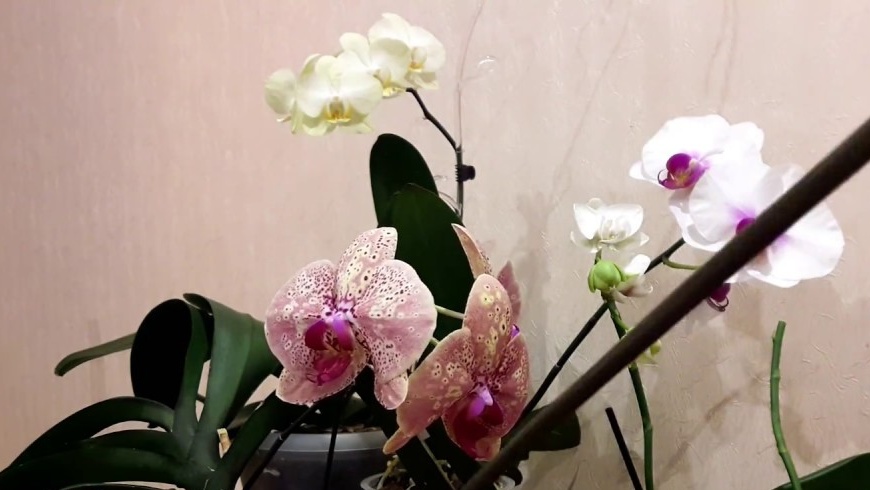 Is it possible to transplant an orchid during flowering
Is it possible to transplant an orchid during flowering
Natalia
Good afternoon. I still did not understand how to transplant a flower with aerial roots. Should I leave them upstairs or cover them with soil?